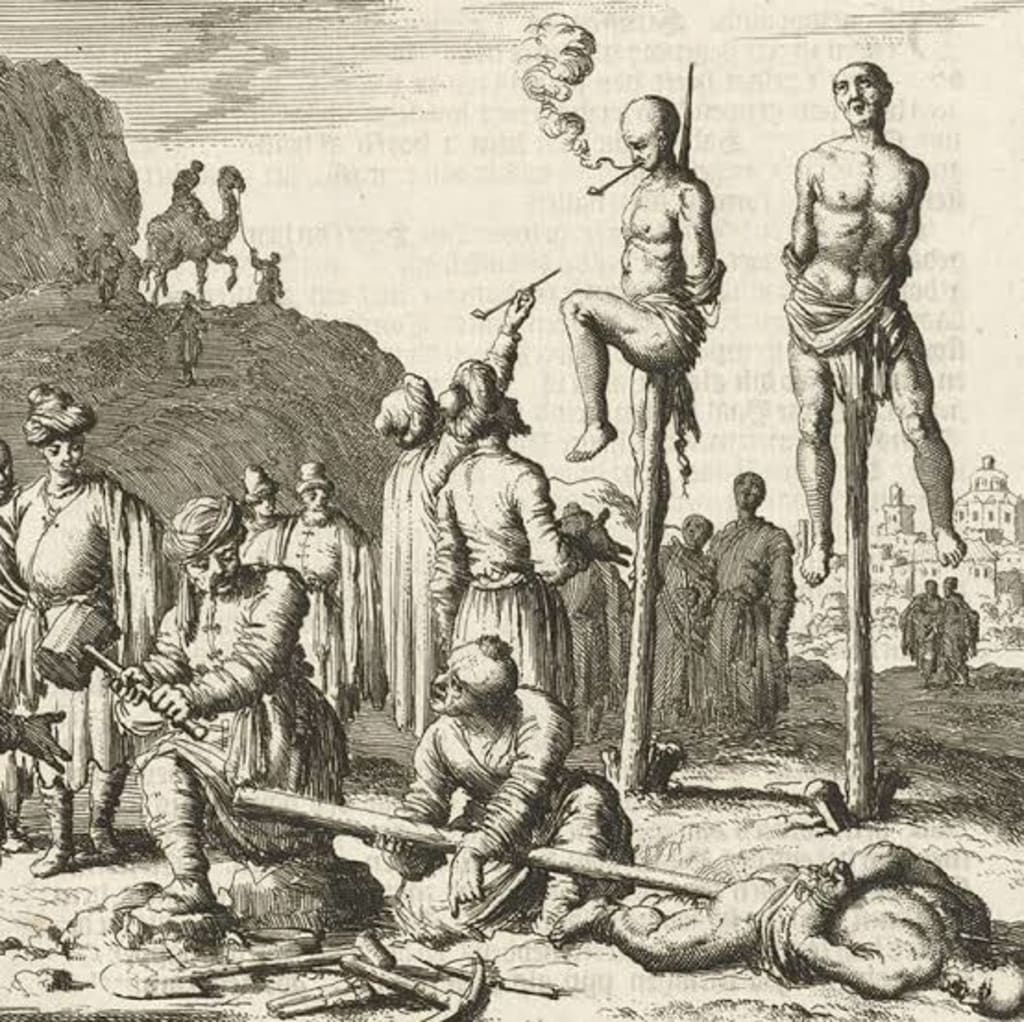
1.Crucifixion:
Crucifixion was a brutal and public method of execution used by the Romans for crimes such as treason and rebellion. The individual was typically nailed or tied to a cross and left to die, which could take several days. The crucifixion was also used to serve as a deterrent to others who might consider committing similar crimes.
2 Flogging:
Flogging, also known as whipping or beating, was a common form of punishment in many cultures throughout history. It was used for crimes ranging from theft to murder, and was seen as a way to inflict physical pain and shame on the individual. The severity of the flogging could vary, depending on the crime committed and the culture in which it was used. In some cases, it could result in serious injury or even death.
3.Stoning:
Stoning was a method of execution by which stones were thrown at a person until they died. It was used in ancient societies such as Babylon and Israel, as well as in other cultures and civilizations throughout history. Stoning was typically used for crimes such as adultery, blasphemy, and other serious offenses. The punishment was meant to be both physically painful and a form of public shaming, as the individual was usually surrounded by a large crowd while being stoned.
4.Banishment:
Banishment was a form of punishment that involved expelling an individual from a community or country. It was used in ancient Greece and Rome, as well as in other civilizations throughout history. The individual was typically forced to leave their home and was prohibited from returning, often for a specified period of time. Banishment was seen as a way to isolate the individual from society and could be used for crimes such as treason, theft, or other serious offenses. In some cases, banishment was also used as a form of political exile, where an individual was expelled from a country due to their political beliefs or affiliations.
5.Deprivation of citizenship:
Deprivation of citizenship was a form of punishment in which an individual lost their rights and status as a citizen in ancient Greece and Rome. This could include the loss of voting rights, the right to own property, and other privileges associated with citizenship. The individual would effectively become an outcast in society, and their status would be similar to that of a foreigner or slave. Deprivation of citizenship was often used as a punishment for serious crimes such as treason or rebellion, and was meant to serve as a deterrent to others who might consider committing similar offenses.
6.Forced labor:
Forced labor, also known as penal labor, was a form of punishment in which individuals were required to perform hard manual labor as a form of penance. This was used in ancient societies such as Greece and Rome, as well as in other cultures throughout history. The individual would typically be required to work for a specified period of time, and the work could range from manual labor such as building roads and fortifications, to more specialized work such as mining or shipbuilding. Forced labor was seen as a way to both inflict physical punishment and to provide a valuable service to the community. In some cases, it could also be used as a form of rehabilitation, where the individual was taught new skills and trained for future employment.
7.Torture:
Torture was the deliberate and systematic infliction of physical or psychological pain as punishment or to extract information. It was used in many ancient cultures, including Greece, Rome, China, and others. Torture was used for a variety of purposes, including to obtain confessions or information, to punish individuals for crimes, or to intimidate or coerce others. The methods of torture could vary greatly, ranging from physical methods such as whipping, branding, or mutilation, to psychological methods such as sensory deprivation or sleep deprivation. Despite being widely condemned, torture has been used throughout history, and remains a controversial and widely debated issue even today.
8.Branding:
Branding was a form of punishment that involved marking the skin with a hot iron, typically in the form of a symbol or letter. It was used as a means of identification or shaming in ancient societies, including Greece, Rome, and others. Branding was used to mark individuals who had committed crimes, such as theft or slavery, as well as to indicate the individual's status or ownership. In some cases, the branding was done on the face or forehead, making it difficult for the individual to hide their shame and making it easier for others to recognize them as a convicted criminal. Despite its widespread use in ancient times, branding is now widely considered to be a form of cruel and inhumane punishment, and is prohibited by most modern legal systems.
About the Creator
BVT
Life is a Book
Every Day a new Page,
Every Month a new Chapter,
AND
Every Year a new Series.






Comments
There are no comments for this story
Be the first to respond and start the conversation.